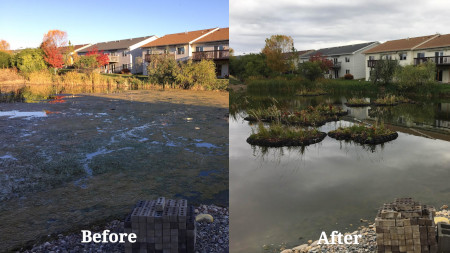

By Bruce Kania
In the United States complacency around climate change is being fostered by the current administration. Same thing in the handful of other nations that have bought into that model. This complacency is deadly. Humans are being distracted when focus is required. Combined with the erratic nature of human advancement, our lack of focus is chewing up the limited time we have to respond to climate change in something approaching a rational manner.
Beyond the distraction of a lack of focus, humanity has squandered the last two and a half decades focused on reduction of atmospheric carbon dioxide. We did not realize that CO2 was just a trigger phenomenon. And the CO2 trigger has already been pulled. Methane is poised to take over from CO2 as the primary agent of climate change within the current decade. Carbon dioxide was simply the trigger…methane is the bullet.
Uninformed humans believe climate change is an issue to be faced by our children, and their children. NO. Earth’s atmosphere will see 2.5 C temperature increase by 2037 at today’s rate of biogenic methane increase, just slightly over a decade from now. The polar ice caps will be gone.
Trauma associated with human displacement, and other factors, will lead to dramatic increases in human conflict. And the spiral of increased heat feeds upon itself. Earth is experiencing a new extinction event, one that promises to exceed human survival prospects. In short, climate change caused human mortality is poised to greatly expand.
Here’s a data point that crystallizes what’s happening…biogenic methane is surging in our atmosphere. It has been since 2006. This methane is not about bovine burps, it’s not about Oil and Gas. The primary source of biogenic methane is nutrient impaired water. Track the surge in Harmful Algae Bloom development over the last two decades, in both fresh and marine water, and you will see it essentially corresponds to methane increase in the atmosphere. And the methane that results from nutrient impaired water is not even on humanity’s radar, even though it’s half again more than methane emissions from all Oil and Gas. But the primary error humanity made was to devote limited and arbitrary resources to carbon dioxide mitigation. The same resources applied to methane can have 88 times more impact.
The surge in atmospheric methane contributes disproportionally to polar warming, and introduces still another form of methane, tectonic methane released from thawing tundra. Note that the 2037 estimate is based on today’s level of atmospheric methane increase. The tectonic methane factor may totally skew that estimate. We may not have even a decade.
Earth’s temperature increased by 10 C over the course of the Great Permian Extinction event, which unfolded over 300,000 years. Just 5% of species present at the beginning of the Permian survived through that period. We resilient humans may actually sustain, a remnant population may survive, through the current event. In any case, it’s clear that earth is at the onset of another major extinction event, and we simply aren’t responding yet.
There are two leveraged forms of climate action that could make a substantive difference. Both are scalable, and high impact. They could make a difference within a decade. They are OIF and AWE.
Ocean Iron Fertilization has terrific potential, but will require expedited science and careful monitoring. If it’s done in oligotrophic (nutrient poor) regions of the ocean, it stands to have massive, favorable impact. Ocean acidification is a risk, but a manageable one. OIF needs to be aggressively demonstrated starting yesterday.
AWE is the aerobic-wetland-effect. Wetlands are beneficial when kept aerobic. When they are not kept oxygenated however, they are primary atmospheric methane factories. Consider that every fresh water waterway includes nature’s wetland effect in at least some capacity. Designing for year round aerobic oxygenation of nutrient impaired fresh water’s benthic (bottom) zone reduces this huge source of atmospheric methane by 95%. The fresh water that generates high volumes of methane is the water near where agriculture and concentrations of humanity, municipalities, come together. This means that we only need to focus on what amounts to a third of fresh water to have a major beneficial impact on atmospheric methane. Incidentally, the Global South is as guilty, maybe moreso, than the West when it comes to aquatic/atmospheric methane. The Global South has a deplorable history around waste water management. So they don’t get to ride a high horse relative to blame for climate change!
The AWE system is probably the most immediate, highly leveraged form of climate action that actually has commercial legs. Our latest nature-based technology, Reduction of Aquatic Methane (RAM), demonstrates how we can achieve AWE and create a healthy, productive, and oxygenated aquatic ecosystem. This is an emerging technology and is poised to be fully commercial in scalable volume over the next several years. For more in-depth insights on RAM and its application to wetland restoration, watch Bruce Kania’s CEF video on RAM. And by “highly leveraged”, I mean its efficacy in reducing atmospheric methane is off the chart. Return on investment needs to match efficacy however. If the historically slow-to-adapt ECO Credit marketplace provides financial justification for AWE to happen rapidly, then at least one effective form of climate action will be in play.
